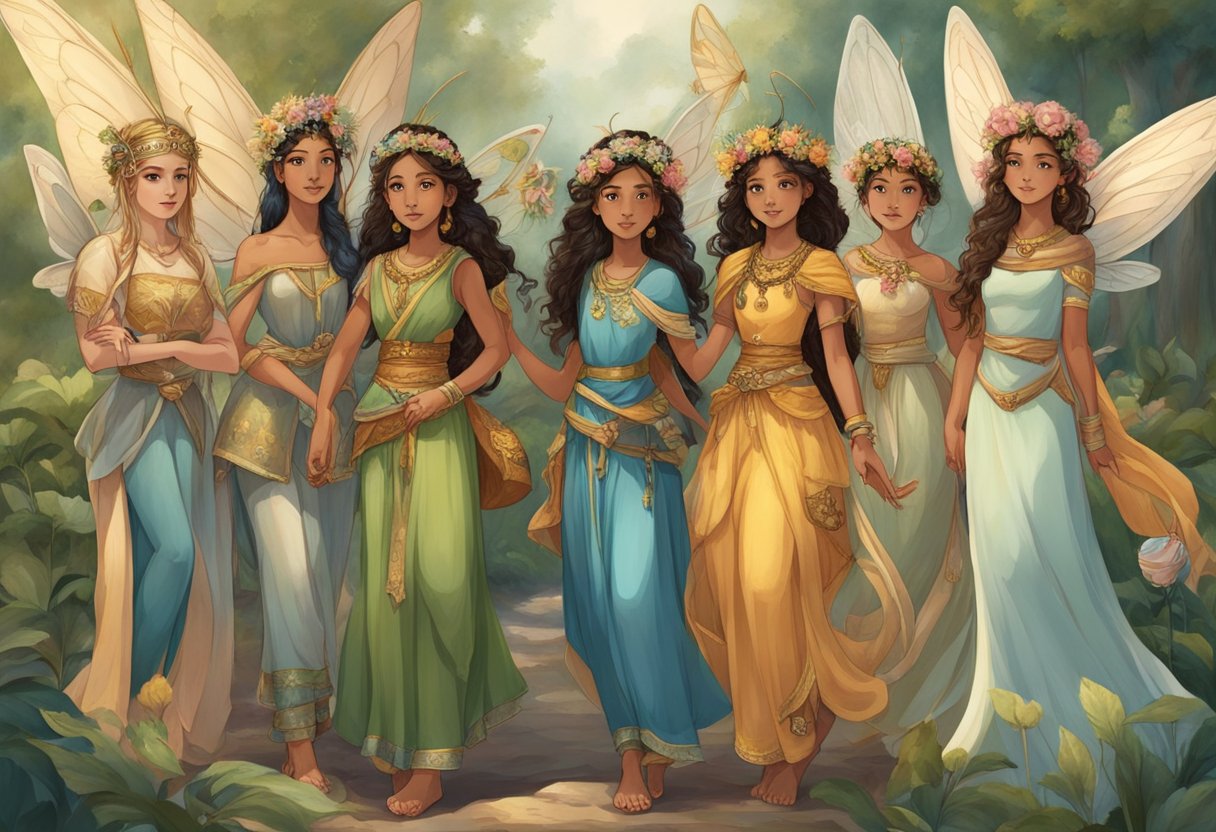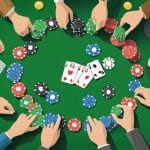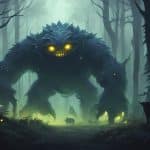Types Of Fairies
Fairies have been a part of human folklore and mythology for centuries, appearing in tales and legends from cultures all over the world. These magical creatures are typically portrayed as small, winged beings with supernatural powers and the ability to interact with humans and nature. While there are many different types of fairies, they all share certain characteristics and abilities that make them unique and fascinating.
Historically, fairies have been associated with nature and the elements, often appearing in stories as guardians of the forest, rivers, and mountains. They are said to have the ability to control the weather, heal the sick, and bring good luck to those who treat them kindly. In some cultures, fairies are also associated with death and the afterlife, with stories of fairy realms and underworlds that are accessible only to the dead or chosen few.
Classification of fairies is an interesting topic that has been explored by scholars and enthusiasts alike. There are many different ways to categorize fairies, including by their physical characteristics, abilities, and interactions with humans. Some of the most common classifications include the Seelie and Unseelie courts, which divide fairies into good and evil factions, and the different types of fairies based on their appearance and abilities.
Key Takeaways
- Fairies are magical creatures that have been a part of human folklore and mythology for centuries.
- They are often associated with nature, the elements, and the afterlife, and are said to have supernatural powers.
- Classification of fairies is a complex topic, with many different ways to categorize these fascinating creatures.
Historical and Cultural Origins

Fairies have been a part of human culture for centuries, with various mythologies and folklore attributing different origins to these mystical creatures. In this section, we will explore some of the historical and cultural roots of fairies.
Celtic and Scottish Roots
Celtic and Scottish folklore have a rich tradition of fairies, known as “Sidhe” in Irish and “Sith” in Scottish Gaelic. These fairies were believed to be supernatural beings who lived in a parallel world that was connected to our own. They were often associated with nature and were believed to have magical powers. In Celtic mythology, fairies were seen as guardians of the natural world, and they were often invoked for protection and good luck.
Greek and Roman Influences
The origins of fairies can also be traced back to ancient Greek and Roman mythology. The Greeks believed in nymphs, who were beautiful, immortal spirits of nature. The Romans had similar beliefs about the “genius loci,” or spirits of a particular place. These beliefs may have influenced the development of fairy folklore in Europe.
Adaptations in Literature
Fairies have also been a popular subject in literature, with many famous writers including them in their works. For example, William Shakespeare’s play “A Midsummer Night’s Dream” features fairies as mischievous beings who meddle in the lives of humans. In the 19th century, the Brothers Grimm published a collection of fairy tales that included stories about fairies. These literary adaptations helped to popularize fairy folklore and cemented their place in popular culture.
Overall, fairies have a rich history and cultural significance that spans many different societies and time periods. While their origins may be shrouded in mystery, their enduring popularity is a testament to their enduring appeal.
Classification of Fairies
Fairies are mystical beings that have fascinated people for centuries. They are often depicted as small, winged creatures with magical powers. However, fairies come in many different shapes and sizes, and are classified according to their characteristics and abilities. In this section, we will explore the different types of fairies and their classifications.
Nature and Elemental Fairies
Nature and elemental fairies are closely associated with the natural world. They are believed to embody the fundamental forces of nature, such as earth, air, fire, and water. Elemental fairies are further divided into different categories based on their respective elements.
-
Earth Fairies: These fairies are linked to the soil, stones, and plants. They are often seen in forests and meadows, and are believed to have the power to heal and protect nature.
-
Air Fairies: These fairies are associated with the wind and sky. They are often depicted as winged creatures, and are believed to have the power to control the weather.
-
Fire Fairies: These fairies are associated with flames and light. They are believed to have the power to create and destroy, and are often associated with the sun.
-
Water Fairies: These fairies are associated with bodies of water, such as lakes, rivers, and oceans. They are often depicted as mermaids or nymphs, and are believed to have the power to control the tides and the weather.
Household and Domestic Fairies
Household and domestic fairies are believed to be helpful creatures that assist with household chores. They are often associated with cleaning, cooking, and other domestic tasks. These fairies are further divided into different categories based on their abilities.
-
Brownies: These fairies are often depicted as small, hairy creatures that live in houses. They are believed to be helpful creatures that assist with household chores, such as cleaning and cooking.
-
Domovoi: These fairies are associated with Slavic folklore. They are believed to be helpful creatures that assist with household chores, and are often depicted as small, bearded men.
Water and Sea Fairies
Water and sea fairies are closely associated with bodies of water, such as lakes, rivers, and oceans. They are often depicted as mermaids or nymphs, and are believed to have the power to control the tides and the weather.
-
Mermaids: These fairies are often depicted as half-human, half-fish creatures. They are believed to be powerful creatures that can control the tides and the weather.
-
Selkies: These fairies are associated with Scottish folklore. They are believed to be creatures that can transform from seals to humans. They are often associated with the sea and the weather.
-
Banshees: These fairies are associated with Irish folklore. They are believed to be creatures that can predict death and warn people of impending danger. They are often associated with the sea and the weather.
In conclusion, fairies are fascinating creatures that come in many different shapes and sizes. They are classified according to their characteristics and abilities, and are often associated with the natural world. Whether they are helpful creatures that assist with household chores, or powerful creatures that control the tides and the weather, fairies continue to captivate the imagination of people around the world.
Physical Characteristics and Abilities
Appearance and Form
Fairies are known for their unique and enchanting appearance. They are often depicted as small, delicate, and beautiful creatures with wings. Their physical appearance can vary greatly depending on the type of fairy, but they are generally humanoid in shape. Some fairies are said to be no larger than a thumb, while others can be as tall as a human.
Wings are a common characteristic of fairies, and they are often depicted as having insect-like wings that allow them to fly. These wings come in a variety of shapes and sizes, and are often described as being delicate and translucent. Some fairies are also said to have the ability to fly without wings, using magic to levitate themselves off the ground.
Magical Powers and Skills
Fairies are known for their magical powers and skills. They are often associated with enchantment, invisibility, and shapeshifting. They are said to have the ability to cast spells and use magic to manipulate the world around them.
One of the most common abilities attributed to fairies is their power of enchantment. They are said to be able to charm and bewitch humans and animals alike, often using their powers to lure them into their realm. Fairies are also known for their ability to become invisible, allowing them to move about undetected.
Shapeshifting is another ability commonly associated with fairies. They are said to be able to take on the form of animals or other creatures, allowing them to move about unnoticed. Fairies are also known for their ability to heal, and are often called upon to help humans and animals in need.
In conclusion, fairies are fascinating creatures with a wide range of physical characteristics and abilities. They are known for their enchanting appearance, magical powers, and skills such as invisibility and shapeshifting. Whether they are no larger than a thumb or as tall as a human, fairies are sure to capture the imagination of anyone who encounters them.
Interactions with Humans and Nature
Fairies have been known to interact with humans and nature in various ways. Some fairies act as guardians and protectors of nature, while others are known for their mischievous behavior and trickery. Additionally, fairies have been known to communicate with humans and influence their actions.
Guardianship and Protection
Many fairies are known for their helpful and protective nature towards humans and nature. Brownies, for example, are house fairies that are known to help with household chores and protect the home from harm. Pixies are another type of fairy that is commonly associated with gardens and are known to protect plants and animals from harm. Elves, on the other hand, are known for their guardianship of forests and mountains.
Mischief and Trickery
Some fairies are known for their mischievous behavior and love of trickery. Trickster fairies, for example, enjoy playing pranks on humans and other creatures, often causing confusion but rarely harm. They are quick, elusive, and enjoy riddles and games. Other mischievous fairies include sprites, who are known for their playful nature, and pookas, who are known for their shapeshifting abilities and love of causing chaos.
Communication and Influence
Fairies have been known to communicate with humans and influence their actions. Some fairies, such as banshees, are known for their ability to communicate with humans through their cries and wails. Other fairies, such as leprechauns, are known for their ability to influence human behavior through their ability to grant wishes and bestow good luck. Additionally, fairies have been known to communicate with animals and plants, and have been associated with the growth and fertility of crops.
In conclusion, fairies have a complex relationship with humans and nature, with some acting as guardians and protectors, while others are known for their mischievous behavior and trickery. Additionally, fairies have been known to communicate with humans and influence their actions, as well as communicate with animals and plants.
Fairy Society and Hierarchy
Fairy society is complex and diverse, with various types of fairies inhabiting different realms and having different roles. Some fairies live in communities, while others prefer to be solitary. In this section, we will explore the different types of fairy society and hierarchy.
Seelie and Unseelie Courts
One of the most well-known concepts in fairy society is the division between the Seelie and Unseelie Courts. The Seelie Court is associated with light and benevolence, while the Unseelie Court is associated with darkness and malevolence. The Seelie Court is said to be ruled by the Fairy Queen, who is often depicted as a beautiful and powerful figure. The Unseelie Court, on the other hand, is said to be ruled by the Fairy King, who is often depicted as a dark and sinister figure.
Solitary and Trooping Fairies
Another important distinction in fairy society is between solitary and trooping fairies. Solitary fairies, as the name suggests, prefer to live alone and are often associated with mischief and trickery. They are known to be unpredictable and may sometimes be harmful to humans. Trooping fairies, on the other hand, live in communities and are known for singing and dancing. They may or may not be friendly to humans.
Some of the most well-known types of trooping fairies include sprites, gnomes, and hobgoblins. Sprites are small, delicate fairies that are often associated with nature. Gnomes, on the other hand, are earth-dwelling fairies that are often portrayed as small, elderly men. Hobgoblins are mischievous fairies that are known for causing trouble.
Solitary fairies include entities such as boggarts and dark elves. Boggarts are mischievous fairies that are known for playing pranks on humans. They are often associated with domestic settings, such as houses and barns. Dark elves, on the other hand, are solitary fairies that are associated with the darker aspects of nature. They are often depicted as sinister and malevolent.
Other types of fairies include the Tylwyth Teg, who are Welsh fairies that are known for their beauty and magical powers, and Puck, who is a mischievous fairy that is often associated with Shakespeare’s play A Midsummer Night’s Dream. The Fay are another type of fairy that are often associated with mythology and folklore.
In conclusion, fairy society is diverse and complex, with various types of fairies inhabiting different realms and having different roles. The Seelie and Unseelie Courts and the distinction between solitary and trooping fairies are two important concepts in fairy society. By understanding these concepts, we can gain a deeper appreciation for the rich and fascinating world of fairy lore.






